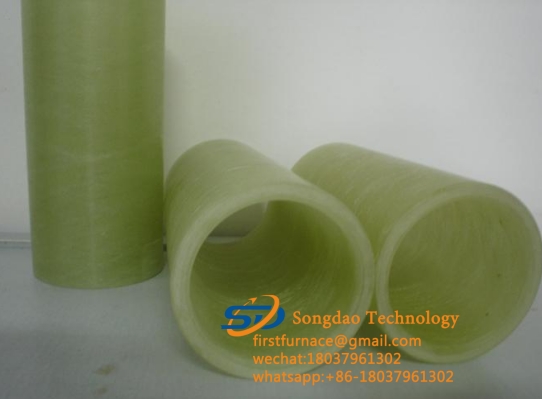- 08
- Feb
Tecnología de producción y desarrollo y aplicación de tubos de fibra de vidrio.
Tecnología de producción y desarrollo y aplicación de tubos de fibra de vidrio.
Hay tres tipos principales de tubo de fibra de vidrio production processes: reciprocating filament winding process, continuous filament winding process and centrifugal casting process.
Proceso de bobinado de filamento alternativo (perteneciente al método de longitud fija): en este proceso, el tanque de inmersión se alterna con el mandril giratorio, y los filamentos largos de fibra de vidrio se colocan en un cierto ángulo oblicuo con respecto al eje del mandril y el ángulo auxiliar (es decir, el ángulo de bobinado) se controla mediante la relación entre la velocidad de movimiento del tanque de inmersión y la velocidad de rotación del mandril, y el movimiento de traslación del tanque de inmersión se controla mediante un control electromecánico computarizado. El número de capas de bobinado se incrementa gradualmente hasta alcanzar el espesor de pared diseñado. Una vez completado el bobinado, la resina del artículo se cura sustancialmente. Después del curado, el mandril se retira del tubo de fibra de vidrio.
Continuous filament winding process (belonging to continuous method): The process is that the tube passes through a feeding station that supplies resin pre-impregnated roving, chopped glass fiber reinforced plastic fiber and resin sand mixture in motion, and the tube is continuously advancing in the core mold. made in.
Centrifugal casting process (belonging to the fixed-length method): In this process, the cut glass fiber reinforced material and sand are fed into a steel mold fixed on the bearing, and the unsaturated resin with catalyst is injected into one end of the steel mold to make the steel mold. It impregnates the reinforcing material. Under the action of centrifugal force, the resin replaces the air in the fibers and fillers, thereby producing a dense composite material without pores. Due to the action of centrifugal force, the inner wall of the tube forms a smooth and clean resin-rich inner surface layer. Cures at higher temperatures. The pipe made by this method is also called glass fiber reinforced plastic sand pipe.

